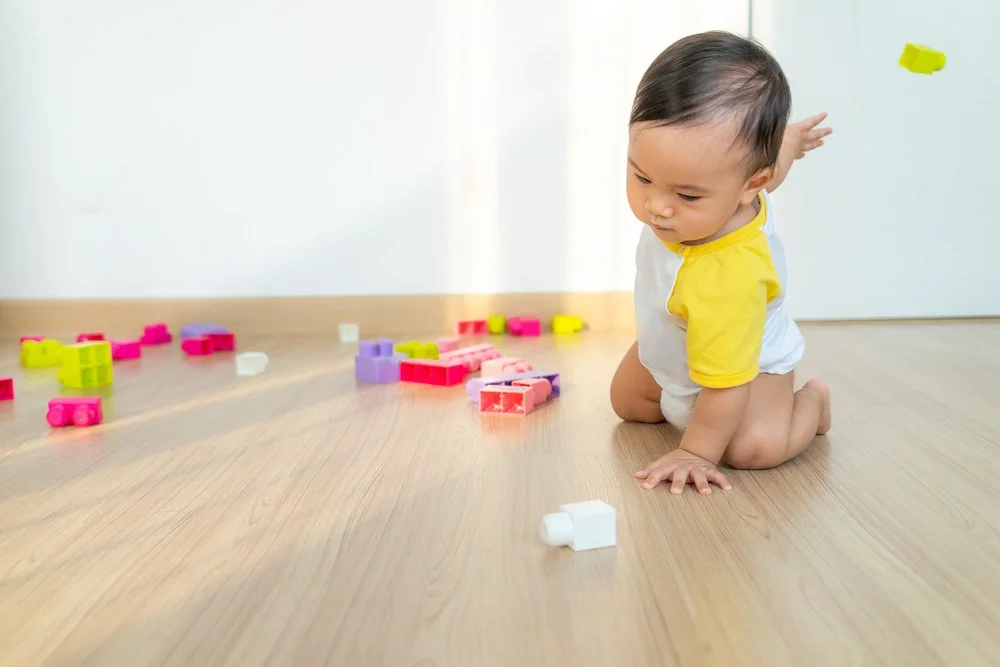Why Do Kids Throw Things? (And What To Do About It)
If you're a parent—or if you work with young kids—you’ve probably witnessed the great mystery of childhood: throwing. Whether it’s a LEGO block, a toy truck, or half a banana sailing across the room, it can be baffling (and frustrating) to figure out why kids throw things. And while our first impulse might be to correct the behavior, we’ll do ourselves—and our kids—a big favor by pausing long enough to get curious.
Let’s start here: throwing is not always on purpose. Sometimes, kids throw simply because they don’t know what else to do. Their system kind of misfires. Imagine that weird sensation when you shiver unexpectedly or say something you didn’t quite mean—it’s like that, but with less control and a developing brain. Toddlers are still brand new to gravity, to objects, to emotions, to the whole “how do I be a human?” thing. So when a block goes flying across the room, it may not be defiance—it might just be a glitch.
In those moments, the best response might be no response. If it seems accidental, just move on. You can say something neutral like, “Oops, I need that block—can you bring it here?” Or keep playing, retrieve the item, and model what to do with it. Kids learn more from what we do than what we say, especially when they’re not in the “learning zone.” Reacting with intensity might unintentionally teach them that throwing gets a big, fun rise out of you—and then It. Is. On.
But what about when it’s clearly on purpose? When that 4-year-old looks you dead in the eye and throws the car clear across the room? Even then, the behavior isn’t “bad”—it’s communication. Think back to when your child was around 9 months old. They likely threw food from their high chair. Not because they were naughty, but because they were done eating—and you hadn’t noticed yet. Throwing was the quickest way to get your attention and a clear result. It worked, so they kept doing it.
Fast-forward to the toddler and preschool years, and if the throwing hasn’t stopped, it might be because the pattern got reinforced over time. It still gets a reaction, so they keep going.
The antidote? Change your reaction.
Instead of focusing only on stopping the throwing, try shifting your attention to what your child is doing well. Catch them being good. Offer praise and connection when they're calm, cooperative, or even just quietly engaged.
Let’s Talk About Sensory Needs
Here’s another important layer: sometimes, throwing meets a sensory need. Kids crave different types of input throughout the day—pressure, movement, resistance—and throwing provides all of that in one quick action. The arm movement, the sound of the object hitting something, the visual tracking—it’s stimulating in a way that can feel really satisfying to a child who’s seeking sensory input.
In these cases, offering what we call “heavy work” can make a huge difference. Heavy work involves activities that engage the muscles and joints in meaningful, grounding ways. It helps regulate the nervous system, provides that deep input kids are craving, and can calm the need to throw in the first place.
Here are some easy, play-based heavy work ideas you can try:
Pushing a laundry basket full of books or toys across the room
Carrying a backpack with a few light objects inside (just around the house!)
Doing animal walks: crab walk, bear crawl, or frog hops
Building with large blocks or cushions
Helping with chores like wiping the table, sweeping, or pushing a vacuum
Kneading dough or squishing playdough
Climbing on playground equipment or up a safe set of stairs
Tug-of-war with a towel or jump rope
Jumping on a mini trampoline or into a pile of pillows
If your child gets to do heavy work regularly—especially when you notice their energy starting to build—it can reduce the urge to throw in the first place. And, bonus: it’s usually fun for them and easy to integrate into everyday life.
Redirect the Throwing
If your child still wants to throw, you’ve got options! Try saying, “Looks like you really want to throw! Let’s…”:
Throw those toys into this bin/bag/box (any container will do!)
Throw soft balls into a laundry basket (or bucket)
Create an indoor “target toss” game with beanbags or rolled-up socks
Toss foam balls against a wall in a safe space
Play catch with a soft ball or basketball with a mini hoop (or a taped-up paper towel roll and a ball of socks)
Go outside and throw balls, leaves, snowballs, etc.
Giving your child a safe and appropriate way to throw teaches them that the need behind the throwing is okay—it just needs a better outlet.
Ultimately, like so many behaviors in early childhood, throwing is a chance for us to observe, get curious, and respond with intention rather than impulse. It’s part of the long game of parenting—helping our kids figure out their bodies, their feelings, and the people around them. And giving ourselves grace as we do the same.
If you want more strategies for how to handle difficult-to-understand toddler behavior, consider scheduling a free conversation to see whether parent coaching might be a fit for your family. I’ll give you the developmental side of things plus a serving of support and strategies to help things along.
